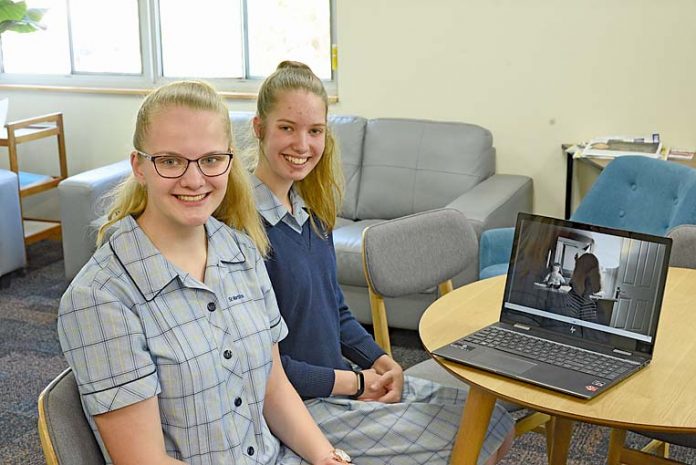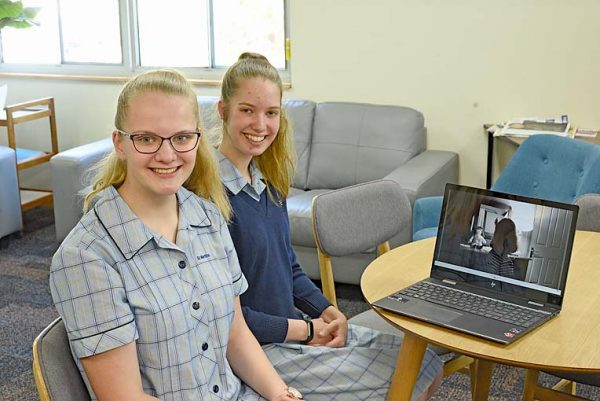

A CONFRONTING video highlighting the harrowing issue of child marriage produced by a pair of St Martins Lutheran High School students has been short-listed as a finalist in a national competition.
Year 10 students Jemima Puust and Agnes Doyle entered their short one-minute clip in the Videos for Change competition after producing it as part of their Christian class studies.
The competition required students of all ages to produce a video about a social issue they are passionate about and the pair’s entry was recently selected as one of 20 finalists across the nation.
“My dad rang me and said there was this lady on the phone wanting to talk to me about a video and I just could not believe it,” Jemima said.
“I was so excited for the rest of the day, I called Agnes and just yelled ‘we’re in the finals’.”
Their video, titled ‘What if it was your child?’, delves into the issue of child marriage, defined as a marriage of a girl or boy before the age of 18.
Child marriage refers to both formal marriages and informal unions in which children under the age of 18 live with a partner as if married.
Jemima said the issue was common overseas in countries which experience poverty, with children sold-off by their parents to relieve them of the cost burden.
“Because they are in such severe poverty and girls cannot work they are (seen as) burdens and an easy way to get money is to shove them off and then they also have less mouths to feed,” she said.
Agnes said it had become the norm in some of these countries, with parents holding the belief child marriage is the best thing for their children.
“In that society they have been told they will be giving their daughter a better life, but in reality their child ends up married to men that are way older than them,” she said.
“In their head the parents sort of know that’s what’s happening, but they do not want to think about it.”
The pair selected the unique social issue because it does not get the same level of publicity in Australia as other problems affecting the world.
As a result, they opted to present the themes in the video from what child marriage might look like in the Western World.
“Because it’s not talked about a lot we wanted to present it in a way that people in Australia might be able to relate to it,” Agnes said.
“The person in the video is a young, white girl getting married off to give the video some power, because if we saw that kind of thing in our society everyone would be appalled.”
After being selected as a finalist, the video now has a chance to be broadcast on Network Ten’s The Project, with the students in the running to win $3000.
While Jemima and Agnes admit being crowned the winner would be a great reward for effort, it was the impact the video had already made, which satisfied them the most.
“It’s about getting more awareness for this issue and helping others,” Jemima said.
“To hear other people’s feedback and hear that we have inspired people to go and sponsor these young people is amazing.”
If they are lucky enough to win the money, Jemima and Agnes indicated they would donate the money to World Vision to allow them to do more work in the area of child marriage.
Competition voting closes October 27 and people can visit www.videosforchange.org/vote to cast a vote for Jemima and Agnes’ video.





